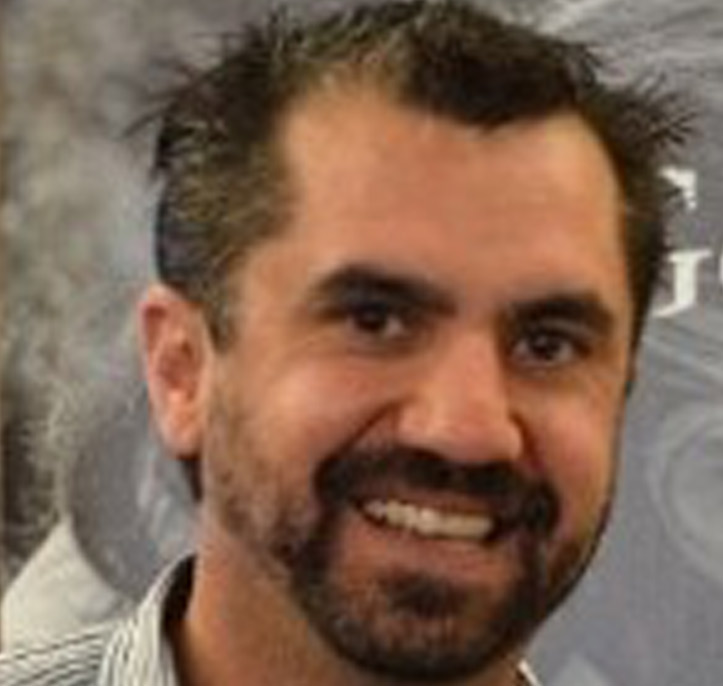2011 SMART Toronto
February 17, 2011
SMART Remediation talks have focused on innovative technologies for remediating contaminated sites, approaches for site characterization, project case studies, regulatory and industry perspectives, and other related topics.

The 1st SMART Remediation conference was held in Toronto on Thursday, February 17th, 2011. Details on the speakers and presentations are provided below.
Speakers

Jan Dean,
Strata Soil Sampling
Jan Dean
Jan has more than 17 years of experience in environmental, geotechnical, and exploration drilling. Since 2004 he has been Vice-President of Strata Soil Sampling and is responsible for the management of all Strata offices. He is an MOE licensed well technician, TDG Certified, Ground Disturbance Certified, Confined Space Certified, WHMIS Certified, and is trained in First Aid.
Introduction to the Membrane Interface Probe (MIP) in Ontario
The Membrane Interface Probe (MIP) is a down-hole tool developed by Geoprobe® that is used to provide semi-quantitative data regarding subsurface contamination. It consists of a specialized tip that has a semi-permeable membrane supported by a stainless steel screen. The subsurface is heated to between 100 and 120 degrees Celsius to increase the rate of volatilization of volatile contaminants. The contaminants diffuse through the membrane and are transported by a carrier gas to the surface. The carrier gas is then analyzed using one of a number of analytical instruments depending on the type of contaminant that is being investigated. The device is capable of assessing the distribution of chlorinated volatile organic compounds as well as light-weight petroleum hydrocarbons. The MIP can be used to quickly and accurately delineate dissolved phase zones. The placement of well screens and locations of soil samples can be improved with the use of the data. In addition, in-situ remediation can be approached in a much more accurate and efficient manner, targeting only the zones that are significantly impacted.

Rick McGregor M.Sc., MBA, CGWP, P.Geo.,
Vertex Environmental Inc.
The Use of Laser-Induced Fluorescence for Detailed Source Zone Characterization
Rick McGregor M.Sc., MBA, CGWP, P.Geo.
Rick McGregor is a hydrogeologist with Vertex Environmental Inc., has over 18 years experience in groundwater and soil assessment and remediation, and has worked in over 30 countries. Rick holds a M.Sc. from the University of Waterloo in hydrogeology and geochemistry and is a Certified Ground Water Professional in Canada and the United States. He is a Licensed Professional Geoscientist in Ontario. Rick has extensive experience with a variety of remedial techniques including in-situ chemical oxidation and reduction, having designed and implemented over 200 in situ programs. He has authored over 40 technical papers and has been an invited speaker at numerous conferences and workshops for the assessment, protection and remediation of groundwater. He has a MBA and over 15 years experience managing projects with budgets greater than $10 million.
The Use of Laser-Induced Fluorescence for Detailed Source Zone Characterization
Laser-induced fluorescence (LIF) can be used to characterize subsurface source zones that contain contaminants that comprise or include polycyclic aromatic hydrocarbons (PAHs), such as gasoline, diesel fuel, jet fuel, and hydraulic fluids. A specialized probe, advanced by direct push methods, emits light through a window in the probe. The PAHs fluoresce, meaning that they absorb the light and emit a light of a longer wavelength. This response is measured by the probe in real time. The quick response of the technology typically allows characterization of between 100 and 150 linear meters in 2.5-cm increments, at between 10 and 20 locations, per day. This provides very detailed information about the extent of the pure phase impacts in a timely manner. The technology works in both saturated and unsaturated environments. Such detailed information is very helpful in increasing the accuracy of source zone characterization, and allows for more efficient remediation to take place. This approach can be used at petroleum hydrocarbon sites such as gas stations and bulk storage terminals to define free product location(s).

Adam Gilmore M.A.Sc.,
University of Guelph
MIP Case Studies: High resolution characterization of subsurface contamination at 2 Sites
Adam Gilmore M.A.Sc.
Mr. Gilmore is a Research Associate and Scientific Project Manager in the School of Engineering at the University of Guelph, working for Dr. Beth Parker in the Institute for Groundwater Research and Innovations Partnerships (GRIP). Mr. Gilmore holds a B.A.Sc. (Civil Engineering) from the University of Waterloo, and an M.A.Sc. (Water Resources Engineering) from the University of Guelph. His research interest lies in using high resolution data to study the effect of source zone treatment on the diffusion of organic contaminants out of low permeability unconsolidated media.
MIP Case Studies: High resolution characterization of subsurface contamination at 2 Sites
The characterization of subsurface contamination from chlorinated solvent DNAPLs in unconsolidated aquifers requires high-quality, depth-discrete data at multiple locations to define the spatial extent of contaminants. This type of characterization is particularly useful in quantifying contaminant mass stored in lower permeability zones, which contribute to long term plume tailing via back-diffusion. A variety of high resolution investigation approaches exist, involving the application of quantitative data collection methods such as sampling depth discrete groundwater or subsampling continuous soil core, as well as qualitative methods such as the Membrane Interface Probe (MIP). The time and cost savings associated with qualitative tools such as MIP are balanced by a trade-off in data quality and reliability compared to quantitative data. This talk draws on experience at field research sites in Florida and South Carolina to 1) showcase the integration of complementary high resolution data from qualitative and quantitative sources to reduce data interpretation uncertainty, 2) identify processes which are expected to affect MIP data, and 3) present an approach for maximizing MIP data quality and reliability.

Kristen Cooper M.Sc.,
Solinst
Waterloo Emitter – An Inexpensive, Low Maintenance, Enhanced Bioremediation Technology
Kristen Cooper M.Sc.
Kirsten has been with Solinst for approximately 15 years, where she focuses on developing, advising and offering technical support to a large team of agents operating worldwide to promote Solinst instrumentation. Kirsten graduated from the University of Toronto with an MSc specializing in Hydrogeology, previously having completed her undergraduate degree in geology at The University of Western Ontario. Prior to joining Solinst, she worked as an Environmental Consultant for 8 years, practicing both in the Toronto area and internationally.
Waterloo Emitter – An Inexpensive, Low Maintenance, Enhanced Bioremediation Technology
The Waterloo Emitter was designed and developed at the University of Waterloo as a low cost effective means of enhancing the natural biodegradation of MTBE and BTEX in groundwater. It provides a method of diffusing oxygen or other amendments continuously into an aquifer. In the case of oxygen the release encourages and sustains the growth of micro-organisms that naturally remediate contaminated groundwater. The advantages, design options and applications for this technology will be discussed along with recommendations for placement and maintenance of systems. A case study that testifies to the effectiveness of this device when using oxygen to remediate BTEX and TPH will be presented, along with examining the potential benefits of using this technology for other in-situ remediation projects with different objectives.

Bruce Tunnicliffe,
Vertex Environmental Inc.
Bruce Tunnicliffe
Mr. Tunnicliffe is President of Vertex Environmental Inc., and is an Environmental Engineer with years of experience designing and implementing remediation of chlorinated solvents and petroleum hydrocarbons. Having worked on many hundreds of in-situ projects, Mr. Tunnicliffe has extensive experience on innovated assessment tools and in-situ remediation techniques. Mr. Tunnicliffe holds a Master’s degree from the University of Waterloo, has authored many publications, and has presented at numerous conferences.
Soil Variability Implications for ISCO Remediation
Spatial variability can introduce uncertainty during the design and implementation of remediation programs, especially with in-situ remedial programs (i.e. chemical oxidation, pump and treat, iron walls, etc). Obtaining an understanding of the distribution and mass of the contaminant is paramount to remedial success. This talk will provide examples of data collected from various sites, and present case studies to demonstrate the effect of different sampling strategies and methods and their effect on the in-situ program’s outcome. Drawing on experience gained from having conducted hundreds of in-situ projects, recommendations for data collection will also be made.